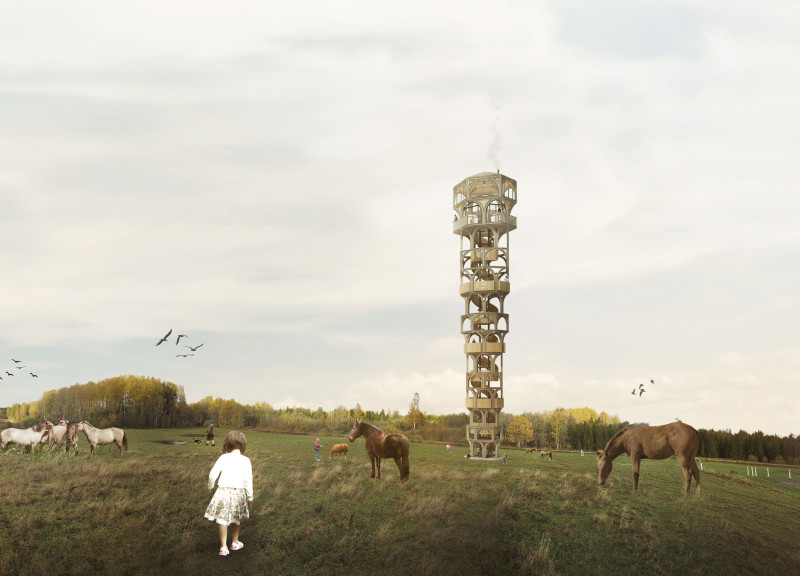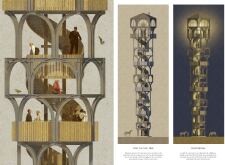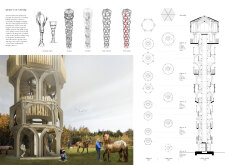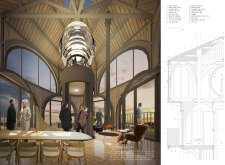5 key facts about this project
The Kurgi Lighthouse is located within the North Latvia Biosphere Reserve and serves as both an observation tower and an educational center. It aims to blend human presence with nature, focusing on efforts to conserve the endangered Latvian Ardennes horse. The design concept represents a journey through the challenges of conservation, positioning the lighthouse as a guiding structure for those seeking to reconnect with their surroundings.
Design Concept
The form of the lighthouse rises and expands upwards, reflecting natural growth patterns. This vertical shape symbolizes the mission of preserving and breeding local horse species while educating visitors about conservation. The lighthouse functions as a beacon, reinforcing the connection between people and the natural landscape, drawing attention to the broader themes of environmental awareness.
Spatial Arrangement
The arrangement of spaces within the Kurgi Lighthouse prioritizes movement and views of the landscape. A central core facilitates circulation, while observation decks and balconies surround it. This layout allows visitors to engage with the surrounding scenery from multiple angles, creating an immersive experience that brings the beauty of nature into the architectural design.
Material Consideration
Materials selected for the lighthouse support its function and durability. Some of the components used include concrete roof tiling, wooden batten, a steel roof frame, waterproof underlayer, mineral-wool insulation, steel structural frame, aluminium board, and corrugated steel flooring. These choices demonstrate a thoughtful approach to construction that emphasizes sustainability and resilience in an outdoor setting.
Architectural Details
Light and transparency are significant features in the lighthouse's design. Large windows and carefully placed openings let natural light fill the interior spaces. This connection to the outdoors is especially noticeable at night when the lighthouse is illuminated, guiding visitors and serving as a landmark in the landscape. These elements create a structure that is both functional and committed to the ideals of conservation.






















































